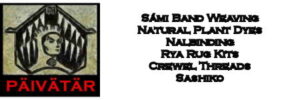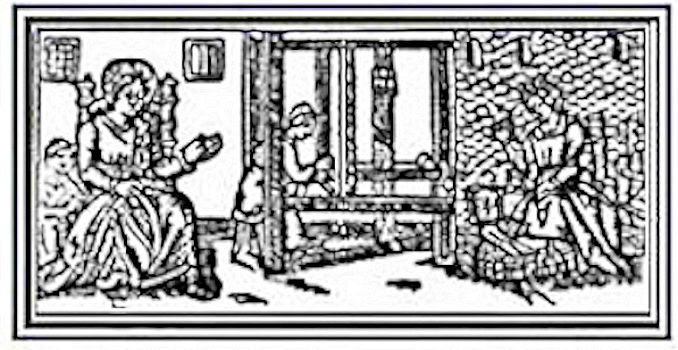Yardage must go through a process called fulling, that opens the fibers and changes the interwoven threads into fabric. Different fulling techniques are used for different fibers. I will describe the process that I use for fulling pure wool yardage or blankets. After all skips, broken threads or other mistakes have been corrected, the yardage can be fulled. Be brave, but please also be very careful as your lovely blanket can quickly turn into a piece of felt, perhaps good for felted slippers but not the fluffy blanket you had hoped for.
In order to full my newly woven blankets, I fill my washing machine with hot water and add some laundry detergent. I then place the blanket into the washer. I turn the washing machine on, and stand by it watching the blanket agitate. Time this process and check the blanket every 30 seconds. Turn the washer off and pull out part of the blanket to check on the amount of fulling that has occurred. Turn the washer back on and let agitate another 30 seconds and again check. This fulling process usually takes about 2 – 3 minutes.
The spinning oils and lanolin are removed with washing. The heat and agitation begin the felting process in the wool, opening up the individual fibers and interlocking them together. When the individual threads no longer move separately, but begin to join together, and the yardage starts to look more like fabric or a blanket (as it should), then stop the washer. If you are not sure if it has agitated enough, it is better to stop than continue, as you can always full the yardage further if need be, however, it is not possible to go back.
Drain the water out of the washer – without turning on the spin cycle. Refill the washer with cool water to rinse out the fabric but without agitation or spin cycle. Drain the water from the washer, and then turn on the spin cycle for about 30 – 60 seconds to remove the remaining water from the blanket.
Hang the finished blanket to dry. Enjoy!
The Village Mill
Laura Fry specializes in wet finishing and offers workshops about weave structures, warp and weft effects, and how shrinkage and take up differences affect the finished cloth.
How to Wash a Wool Blanket
Are you wondering how to wash and care for your newly woven wool blanket? Here’s how.
Hand Weaving Books
Weaving on a Little Loom (Everything you need to know to get started with weaving, includes 5 simple projects
The Key to Weaving: A Textbook of Hand Weaving for the Beginning Weaver
The Weaver’s Companion (The Companion Series)
Learning to Weave
The Big Book of Weaving: Handweaving in the Swedish Tradition: Techniques, Patterns, Designs and Materials
The Handweaver’s Pattern Directory
A Weaver’s Book of 8-Shaft Patterns: From the Friends of Handwoven
Krokbragd: How to Design & Weave
Doubleweave: On Four to Eight Shafts
Double Weave: Theory and Practice<
Magic of Doubleweave: The Best of Weaver’s (Best of Weaver’s series)
Weaving In the Arts: Widening the Learning Circle
DIY Woven Art: Inspiration and Instruction for Handmade Wall Hangings, Rugs, Pillows and More!
>On the Loom: A Modern Weaver’s Guide
 LONGTHREAD MEDIA VIDEO
LONGTHREAD MEDIA VIDEO
 LONGTHREAD MEDIA SUBSCRIPTIONS
HANDWOVEN MAGAZINE
PIECEWORK MAGAZINE
SPINOFF MAGAZINE
LEARN LONGTHREAD MEDIA
PAIVATAR HANDMADE
LONGTHREAD MEDIA SUBSCRIPTIONS
HANDWOVEN MAGAZINE
PIECEWORK MAGAZINE
SPINOFF MAGAZINE
LEARN LONGTHREAD MEDIA
PAIVATAR HANDMADE
 Paivatar on YouTube
Visit my YouTube channel for how-to craft videos.
Paivatar on YouTube
Visit my YouTube channel for how-to craft videos.
Or Please visit my Channel on Rumble for more how-to videos.
https://rumble.com/Paivatar
LIVE STREAMS - Paivatar Studio
KICK
TWITCH MAKERS&CRAFTING
YOUTUBE
Categories: HAND WEAVING, How To



1 reply »